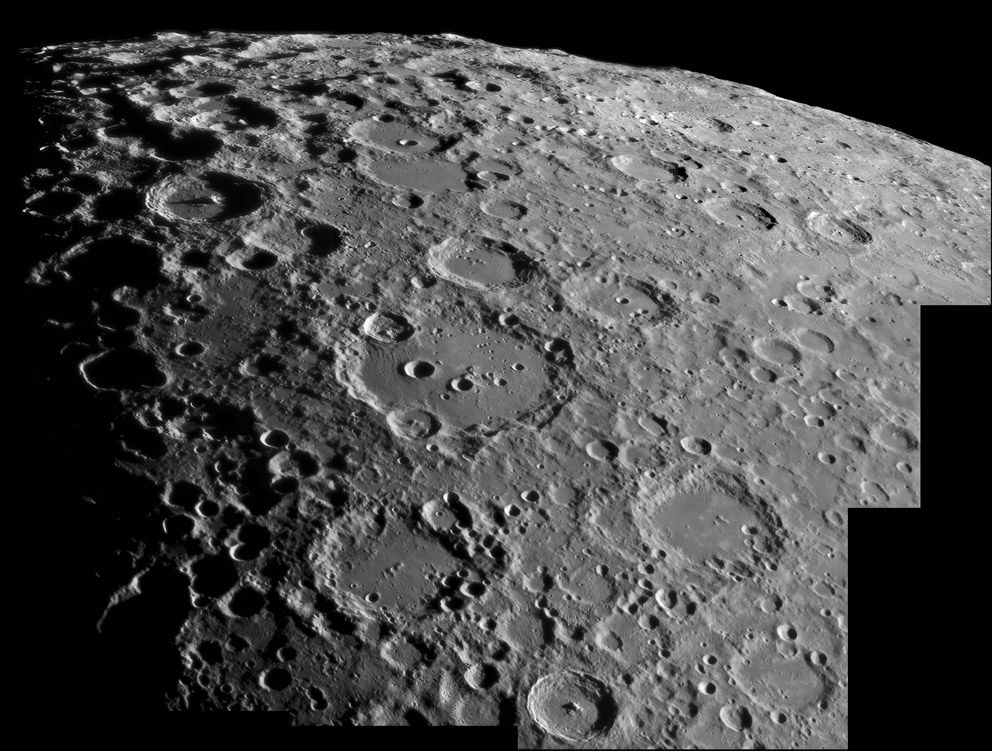
image by Stefan Lammel, Uxbridge, England
The southern highlands of the Moon are saturated with impact craters. That means that each time a new one forms it destroys another of the same size, so that the number of craters stays constant. But if you look closely you’ll see that there are spaces between craters where new ones can form without destorying old ones. So saturation must be talked of in terms of a specific diameter. The highlands are saturated for craters 4 km wide and smaller. It is also clear from looking at the flat, smooth floors in many of these craters that processes in addition to impact cratering erased earlier craters, These smooth crater fills - and similar materials between some craters - have been interpreted both as volcanic lava flows and as fluidized ejecta from the formation of Orientale, Crisium and other impact basins. Almost all lunar scientists accept the later explanation, but crater counts on these surfaces show that some must be younger than Orientale, the youngest basin. Thus this wonderful image is full of distractions (craters) which keep us from confronting the details of the processes that created the scene.
Technical Details:
14 October, 2006. 10″ f4.8 Newtonian + DMK21-AF0 + Astronomik Red filter + 5x Powermate. Nine panel mosaic, 900/5000 frames per panel. South up because it is much more comfortable to interpret.
Related Links:
Rükl charts 63-5, 71-3
To see image at full resolution visit Stefan’s website
Yesterday's LPOD: What's Your Lunar Address?
Tomorrow's LPOD: Young's Old Catalogue
COMMENTS?
Register, Log in, and join in the comments.



